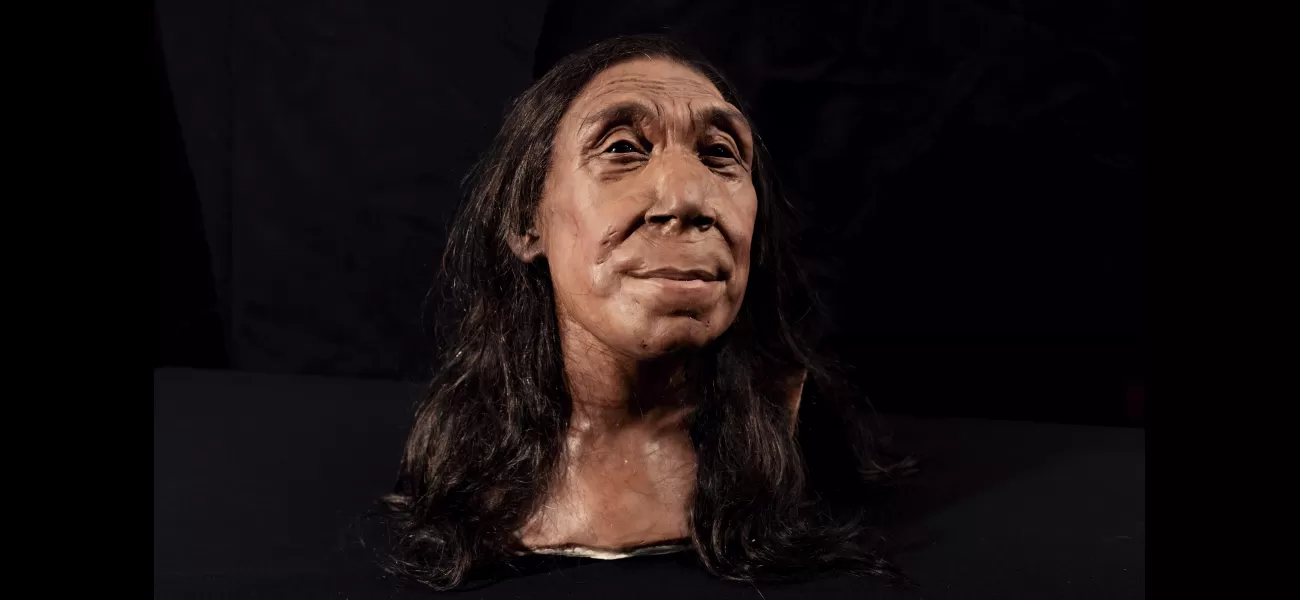A documentary on Netflix unveils the appearance of a Neanderthal woman who lived 75,000 years ago.
She's aging well at 75,000 years.
May 1st 2024.

Allow me to introduce you to Shanidar Z – the face of a 75,000-year-old female Neanderthal who has been brought back to life in a new and fascinating Netflix documentary. This incredible feat was made possible by a team of dedicated archaeologists from the University of Cambridge and Liverpool John Moores University, who pieced together her shattered skull using hundreds of bone fragments.
Shanidar Z was discovered in 2018 in Iraqi Kurdistan, in a cave that was once a resting place for the Neanderthal species. This particular cave gained fame in the late 1950s when several Neanderthal remains were found, indicating that they were buried there in succession. The new documentary, entitled "Secrets of the Neanderthals," follows the team as they return to the cave to continue their excavations.
Dr. Emma Pomeroy, a palaeo-anthropologist from Cambridge, explains that Neanderthal skulls have distinct features such as large brow ridges, lack of a chin, and a projecting midface that results in a prominent nose. However, the recreated face of Shanidar Z suggests that these differences may not have been as pronounced in real life.
The process of reconstructing the skull was compared to "a biscuit dunked in tea" due to the fragile nature of the bones. The skull had been crushed, possibly by rockfall, causing it to flatten to a mere two centimeters. The researchers believe that this may be the top half of an individual whose remains were uncovered in 1960.
The recreated skull revealed that Shanidar Z was an older female with worn down teeth, indicating her age. She was also estimated to be around five feet tall, with some of the smallest adult arm bones in the Neanderthal fossil record. Dr. Lucía López-Polín, the lead conservator, spent over two hundred hours piecing together the skull freehand, including the upper and lower jaws.
The excavation site suggests that Shanidar Z was laid to rest in a gully, possibly formed by running water and then further hollowed out by hand to make room for her body. Her flattened skull and posture suggest that she may have been propped up against the wall with a rock serving as a cushion behind her head.
Professor Graeme Barker, who leads the excavations at the cave, sees Shanidar Cave as a valuable laboratory for understanding human evolution. He poses the question, "Why did Neanderthals disappear from the stage around the same time as our own species spread over regions where Neanderthals had lived successfully for almost half a million years?"
The documentary "Secrets of the Neanderthals" will be available on Netflix worldwide at 8 am on Thursday, May 2nd. Through the incredible work of these dedicated archaeologists, we are able to catch a glimpse into the life of Shanidar Z and perhaps gain a better understanding of our shared human history.
Shanidar Z was discovered in 2018 in Iraqi Kurdistan, in a cave that was once a resting place for the Neanderthal species. This particular cave gained fame in the late 1950s when several Neanderthal remains were found, indicating that they were buried there in succession. The new documentary, entitled "Secrets of the Neanderthals," follows the team as they return to the cave to continue their excavations.
Dr. Emma Pomeroy, a palaeo-anthropologist from Cambridge, explains that Neanderthal skulls have distinct features such as large brow ridges, lack of a chin, and a projecting midface that results in a prominent nose. However, the recreated face of Shanidar Z suggests that these differences may not have been as pronounced in real life.
The process of reconstructing the skull was compared to "a biscuit dunked in tea" due to the fragile nature of the bones. The skull had been crushed, possibly by rockfall, causing it to flatten to a mere two centimeters. The researchers believe that this may be the top half of an individual whose remains were uncovered in 1960.
The recreated skull revealed that Shanidar Z was an older female with worn down teeth, indicating her age. She was also estimated to be around five feet tall, with some of the smallest adult arm bones in the Neanderthal fossil record. Dr. Lucía López-Polín, the lead conservator, spent over two hundred hours piecing together the skull freehand, including the upper and lower jaws.
The excavation site suggests that Shanidar Z was laid to rest in a gully, possibly formed by running water and then further hollowed out by hand to make room for her body. Her flattened skull and posture suggest that she may have been propped up against the wall with a rock serving as a cushion behind her head.
Professor Graeme Barker, who leads the excavations at the cave, sees Shanidar Cave as a valuable laboratory for understanding human evolution. He poses the question, "Why did Neanderthals disappear from the stage around the same time as our own species spread over regions where Neanderthals had lived successfully for almost half a million years?"
The documentary "Secrets of the Neanderthals" will be available on Netflix worldwide at 8 am on Thursday, May 2nd. Through the incredible work of these dedicated archaeologists, we are able to catch a glimpse into the life of Shanidar Z and perhaps gain a better understanding of our shared human history.
[This article has been trending online recently and has been generated with AI. Your feed is customized.]
[Generative AI is experimental.]
0
0
Submit Comment





